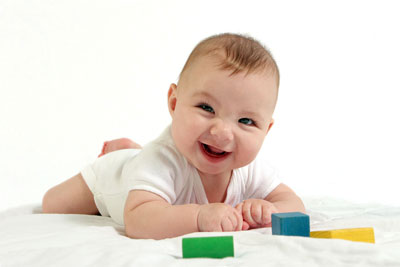- เกี่ยวกับเรา
- ผลิตภัณฑ์
- EXPLORE
- ประเภทผลิตภัณฑ์
- กลุ่มผลิตภัณฑ์
- ประเภทผิว
- บทความการดูแลลูก
- สั่งซื้อออนไลน์
- ติดต่อเรา
- สมัครสมาชิก
- เบบี้มายด์คลับ
- Power of Gentle Touch
- บทความการดูแลลูก
- ทารก เด็กแรกเกิด (0-12 เดือน)
- 9 simple ways to raise smarter children
9 simple ways to raise smarter children
Children are always innocent. They are like a piece of clean and white cloth. We need to well understand their nature before directing them, to the way we want them to be. The methods presented here have already been analyzed, tested, experimented, and concluded by academicians that they are very effective ways for worldwide applications.

1. Eye contact
When the baby is awake and opens its eyes, parent should look into the eyes for a while because the first thing that a newborn baby can always remember is a human’s face, and the parent’s faces are the things that the baby wants to remember. Each time the baby looks at our faces, the baby’s brain increasingly memorizes and keeps the images into the memory.
2. Breast milk makes baby smarter
Try to continue breastfeeding as long as you can. Results of studies among children at school found that the breastfed children have higher IQ than non–breastfed children. Besides, breastfeeding time is a very important moment to create and strengthen the mother-baby bonding.
3. A magical mirror
Almost all of the babies like looking into the mirror. They enjoy watching themselves in the mirror, trying to wave their hands or smile at the mirror, and always happily laugh.
4. Tickling
Laughing is a starting step for development of the baby’s sense of humor. Playing crab-crawling by using your fingers enables children to learn the situational expectation because, when their parent plays crab-crawling, children can guess what would happen next such as, for example, the direction and movement of the crab (parent’s fingers).
5. Go sightseeing together
Take children for a walk outside and describe surrounding things to them such as, for instance, “wow! There are a lot of birds on this tree!” or “Look! There are birds up there too!”. Describing the observed environments to children enables them to learn more variety of words.
6. Singing is fun!
We can create personal sounds and rhythms, only for us and the baby, at possible moments such as, for example, during diapers changing we can sing a song about changing diapers. Such song and rhythm may be a short poem matched high/low sound as a rhythmic song. Alternatively, you may play various kinds of songs for children. For example, playing folk songs on one day, and then play instrumental or popular songs on the other day. It was found by researchers that music rhythms are related to children’s ability in learning Mathematics.
7. Hide-and-Seek
Playing hide-and-seek not only makes children laugh but also teaches them that the lost things can be retrieved.
8. Allow children to occasionally relax and be with themselves
Spend 5-10 minutes each day to quietly and comfortably sit down on the floor at home, without playing any songs or keeping the lights turned on, and let children to explore things as they wish. There is no need for parent to interfere what children are doing. Take time to observe what they do and how long it takes until they crawl back to play with you. This is the first step for children’s selfness training.
9. Enjoyable meals
When children are able to consume more supplemental foods, remember to prepare foods with various kinds, sizes, and surfaces such as small pieces of fruits, pastas, macaroni, or cereals. Let children to freely use their hands, if they wish, because this helps to practice using fingers and senses when they touches foods with different forms.
ครีมอาบน้ำเด็ก
แป้งเด็ก
สบู่ก้อน
โลชั่น ครีมทาผิวเด็กและเบบี้ออย
สบู่เด็ก
แชมพูเด็ก
น้ำยาซักผ้าเด็ก
น้ำยาปรับผ้านุ่มเด็ก
น้ำยาล้างขวดนม
ชุดของขวัญ
ผลิตภัณฑ์สำหรับผู้ใหญ่
จันทร์ – ศุกร์ ( 08.00 น. – 17.00 น. )
โทร : 0-2351-1111
อีเมล : This email address is being protected from spambots. You need JavaScript enabled to view it.
© 2021 Osotsapa Company (Limited), All Rights Reserved. Privacy Policy/Terms of Service/CA Transparency Act


